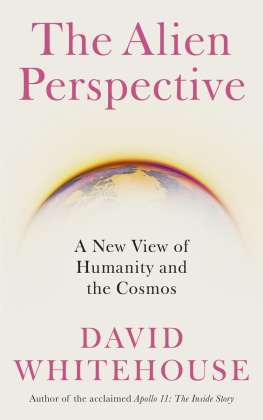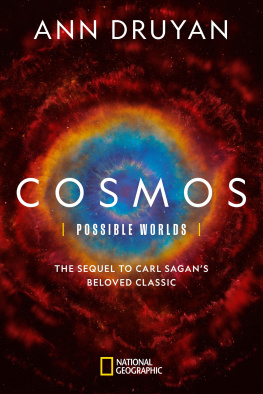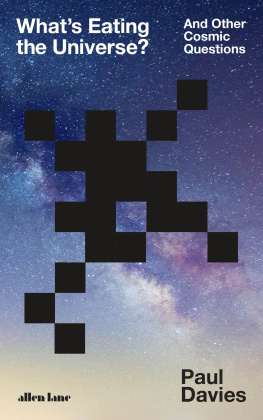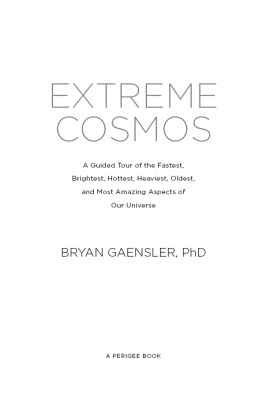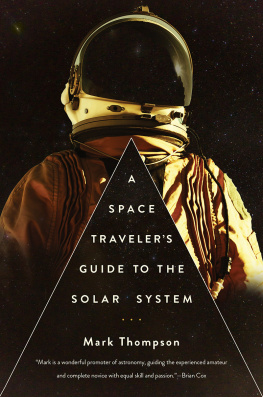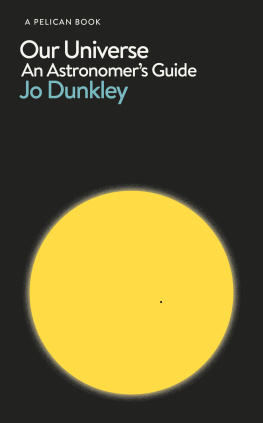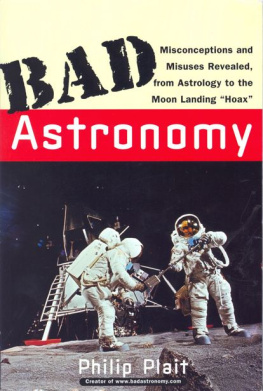
To anyone who has dreamed of
standing on the bridge of a starship,
looking out into the universe.
And always: for Marcella and Zoe.
CONTENTS
W hen I was a kid, I loved science, and I loved science fiction. I ate up every science book I could get my hands on, especially on astronomy, learning as much as I could about it. And when science didnt have an answer for mebecause one didnt exist yet or I couldnt understand itsci-fi was there to expand my imagination.
I would dream of standing on the bridge of a starshipit didnt matter which one; the Enterprise , the Jupiter 2 , or any of the vessels created by other dreamersand watching as stars flew by and other planets approached. What would it be like to look up and see a green sky, lit by three suns, with a dozen moons hanging overhead? Or to pass by a multihued glowing nebula as stars formed inside it? Or to fly through a star cluster, the hull of the ship gleaming from the reflected light of a million suns?
No, let me correct myself: I didnt dream about it. I ached for it. In a way, I became an astronomer so I could see all these things, so I could travel the universe and take in its wonders, even if only through an eyepiece or via my computer monitor.
And also so I could take others along with me. After I got my PhD in the late 1990s, I began to write and give public talks about astronomy, and I learned there were so many other would-be space travelers longing to get up close and personal with the universe. Id show some gorgeous image of a nebula or a galaxy, and inevitably people would ask, Is that what it would look like if you were there?
The answer is almost always, Well, its complicated. How a telescope sees and how you see are two different thingssometimes very different thingsand trying to figure out what youd see if you were actually visiting some cosmic object or another can be difficult. But the question gnawed at me. What would these objects look like up close?
The more I thought about it, the more interesting the question became. My day job at the time involved working on Hubble Space Telescope data, and sometimes the images got me wondering about what I was seeing. More than once Id be poring over an image of a star field in a nearby galaxy and the kid part of my brain would take the conn, and in my head Id be piloting a starship through those stars, piercing a bright nebula, skimming the outer atmosphere of a red giant.
It occurred to me that we knew a lot more science than when I first imagined myself plying the galaxy. Back in my youth, for instance, astronomical images were usually washed-out, vaguely colored photos printed in books and newspapers. The images sent back by space probes were low resolution and difficult to interpret. But now I was spending my days awash in incredible ultra-high-resolution photos from Hubble.
I decided that writing an article about the science married to the fiction would be fun, and I pitched the idea to Astronomy magazine. They accepted. The article became Under Alien Skies, featured on the magazines cover in January 2003, and it explored the view inside a globular cluster, inside the Orion Nebula, and on a planet orbiting a red dwarf star.
I loved writing it; it allowed me to let my scientist-brain research, learn, and explain the concepts, all while my kid-brain steered. Thats more or less been my modus operandi ever since: talk science, but have fun doing it. I immediately wanted to write more on the topic, but found myself sitting on the idea for years.
It was always there, though, and sometimes it pays to wait. As the years passed, new telescopes launched, opening new views and revealing new real science to inform the imaginary vistas in my head. We discovered planets orbiting other suns and learned more about the mechanics of star clusters. Our probes visited the Moon, Mars, Jupiter, Saturn, even tiny frigid Pluto, sending back jaw-dropping images of these worlds. A worldwide scientific collaboration took the first close-up image of a black hole.
I couldnt resist any longer. We dont know everything about these distant places, but we know more. Thats the point of science, after all: to learn.
Perhaps the day will come when we can travel the solar system on a whim. Perhaps, though this is far less likely, well have starships capable of faster-than-light travel, enabling us to ply the vast blackness between the stars. Until then, though, imagination is what we have. But thats not too shabby. Happily, right now we have centuries of science, math, and astronomical observations we can use to deduce what wed see and experience if we were to travel the cosmos.
We know enough to paint a much clearer picture, and what we dont know we can make pretty good guesses about. And theres so much to know. Its a big universe, with plenty to see.
What does it look like, under alien skies?
Lets find out.
UNDER ALIEN SKIES
I ts midnight, local timenot that thats useful; everyone goes by Coordinated Universal Time anyway, for convenienceand youre outside, lying down on a specially built chair. Its more of a chaise longue, to accommodate the bulky suit and support you in the correct position: basically, looking straight up. The other tourists in your group surround you in their own chairs, but there were over a dozen others already here when you arrived. Their spacesuits identified them as members of the south polar mining teams; apparently, all the space agencies and companies gave nonessential personnel special dispensation for this event. After all, no one would want to be working the ice mines now of all times.
This particular wide pad outside the big group airlock of Alpha was specially designed as an exterior observation deck for just this purpose. The chairs are adjustable but permanently mounted into fixtures embedded in the pad. Theyre made of some sort of material thats resistant to heat fluctuations and the harsh ultraviolet sunlight. The deck itself is made of regolithpulverized rocks and dust from the surface, packed and treated for solidity.
Youre not exactly comfortable but its not too bad. The guides adjusted everyones seat beforehand and made sure everyone was as cozy as possible under the circumstances. The outside lights were switched off a moment ago, but you can see just fine: A full Earth hangs nearly directly above you, casting more than enough light to see by. Certainly more than the full Moon does from Earth.
You look up at it. The texture of Earths surfacethe clouds, land, oceanmakes it hard at first to see what you came to see. But then you notice it: a small, fuzzy black circle, small compared to the disk of the Earth, slowly crawling across the face of humanitys home world. Speed is relative, of course. That shadow is moving at well over 1,000 miles per hour, faster than the speed of sound. But from a quarter million miles away, even that terrific speed is diminished.
The commlink fills with gasps and delighted shouts of There it is! You smile, but mute the link. Youd rather experience this for yourself. If theres an emergency, the guides can override the mute anyway.
Scooching around in the suit a bit to settle in, you reminisce about the time your parents took you to Wyoming to watch a solar eclipse. The shadow swept across the United States, and everyone at the time called it the Great American Eclipse. You were just a kid. You remember the light changing, the air growing cold, the singing birds stopping while crickets started chirping, thinking the approaching darkness was that of night and not the Moons shadow sweeping across the landscape. When totality hit and the Moon blocked the Sun, the glory of the Suns coronaits ethereal atmosphere, surrounding it like a luminous misttook your breath away. It was eerie and beautiful, perhaps the most beautiful thing you had ever seenuntil now.
Next page


